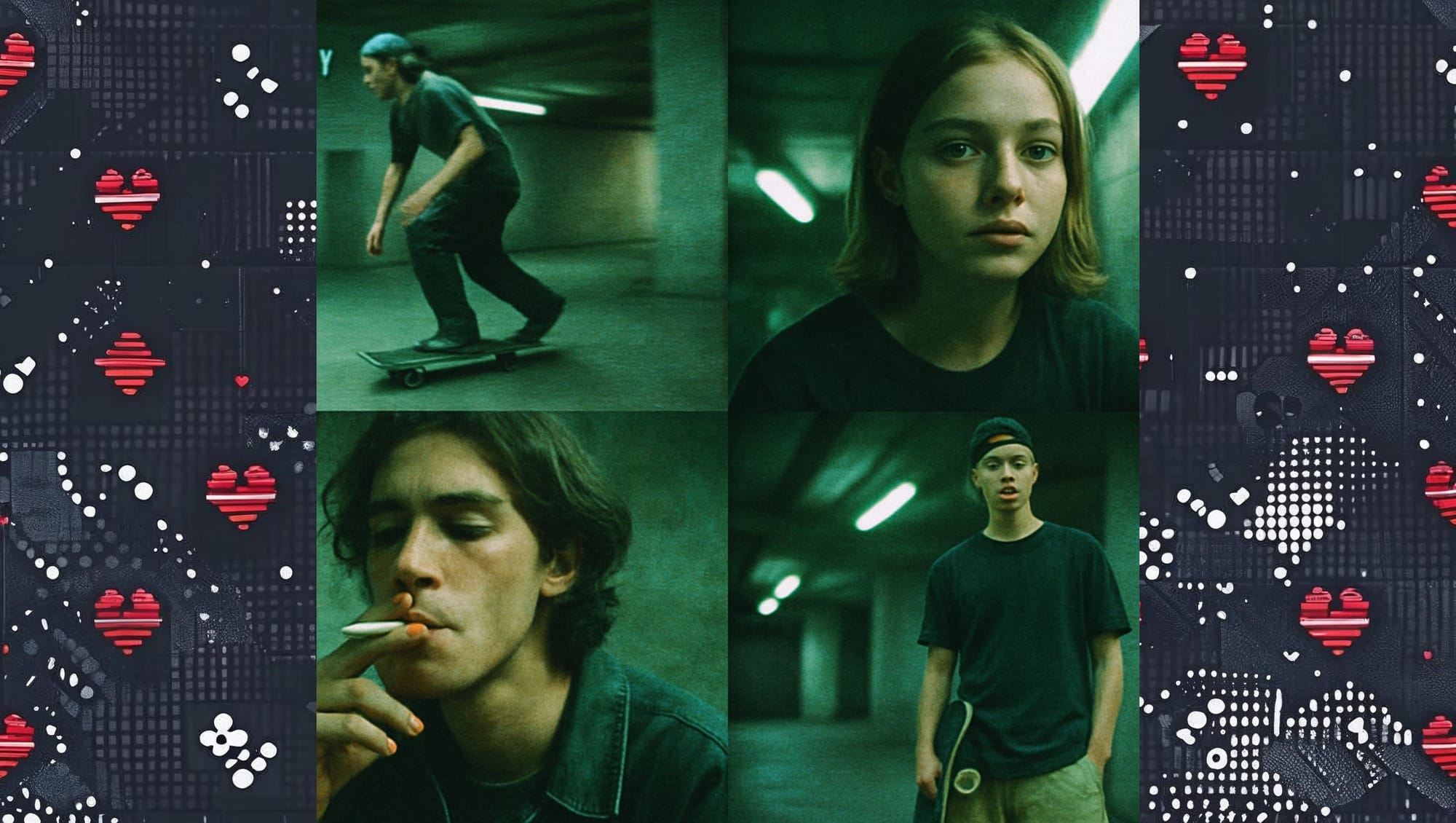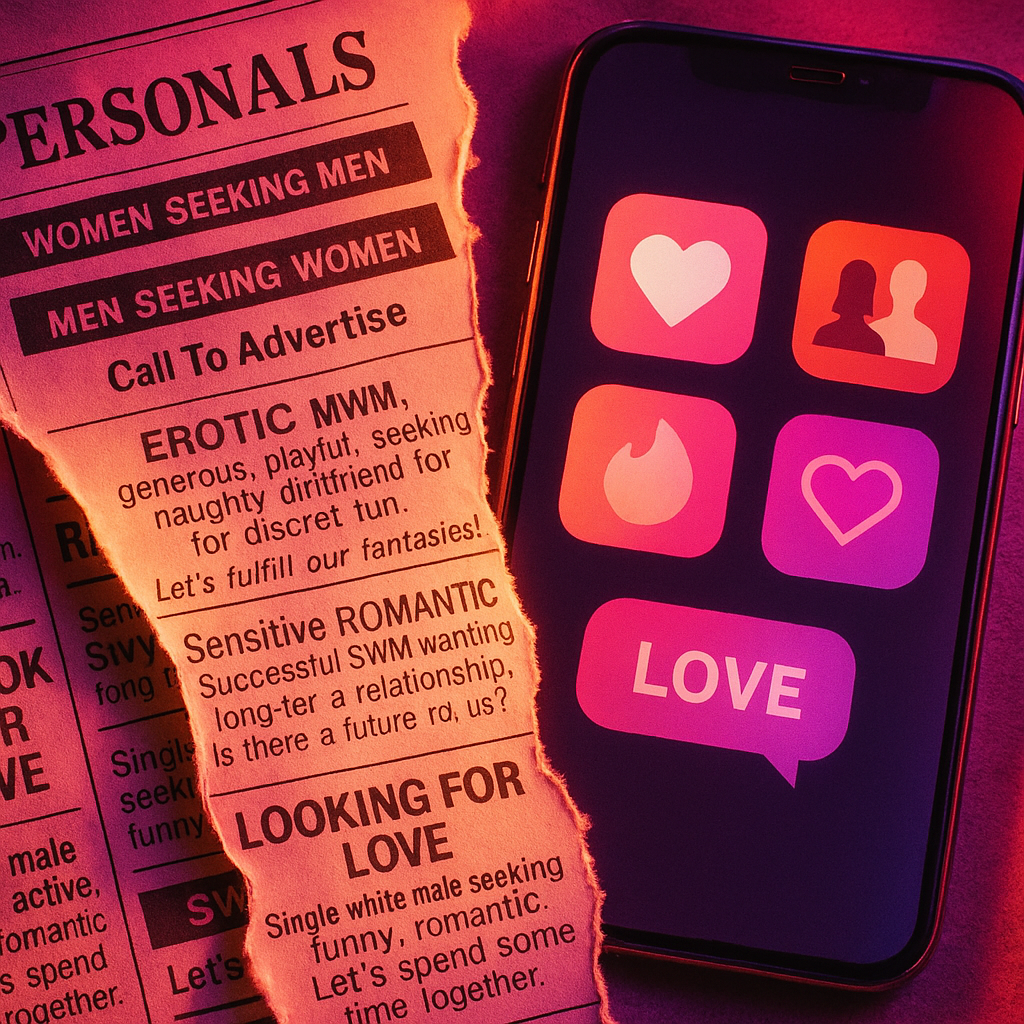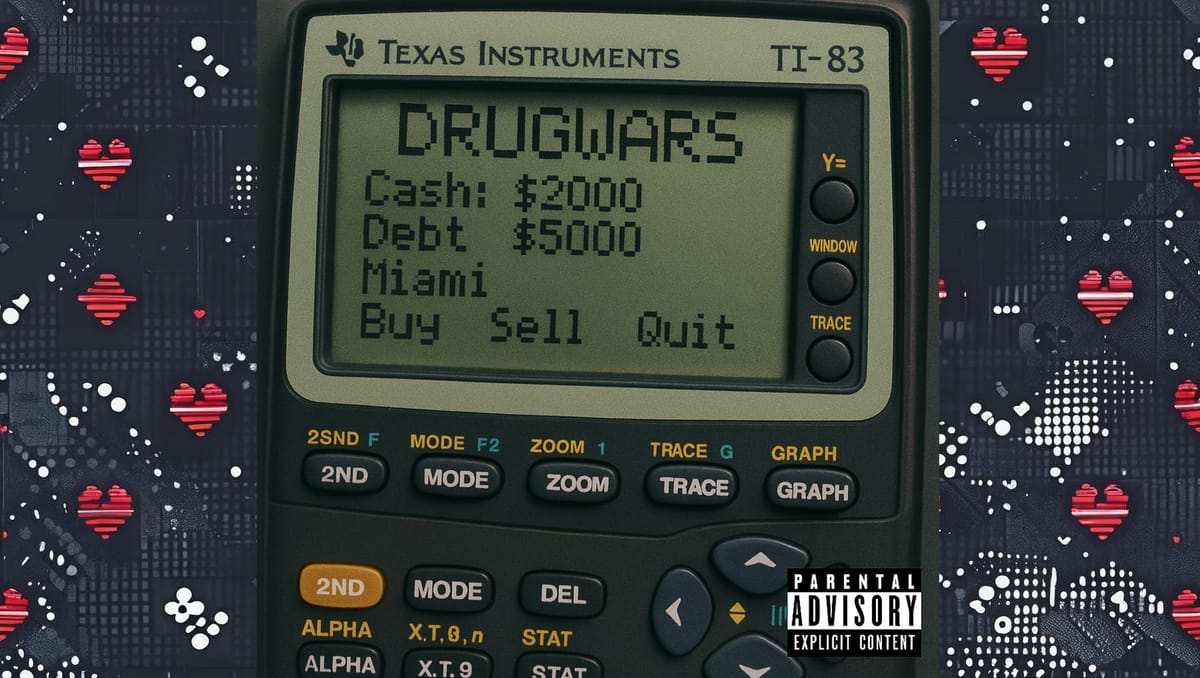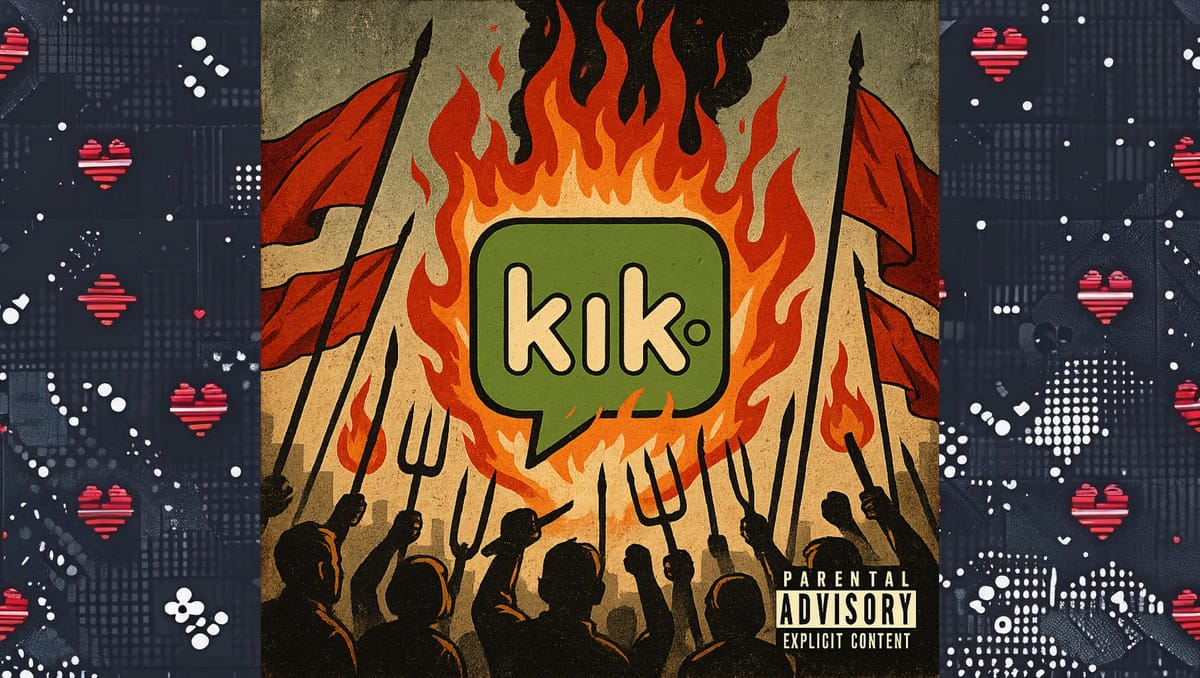Harmony Korine, Trauma Intimacy, and the Feeld Generation

Harmony Korine rewired intimacy in the 90s. AOL and Craigslist operationalized it. Feeld is where the scar tissue grew into sustainable kink.
Intro
Harmony Korine didn’t make movies in the 90s; he set off cherrybombs in your local Blockbuster. Kids (1995), Gummo (1997), Julien Donkey-Boy (1999) — these weren’t films, they were crime scenes. VHS grenades left on the stoop. If you were young enough when they hit, you didn’t just watch them, you were seen by them but also imprinted by the experience. They rewrote how you thought sex, danger, and connection were supposed to feel.
So when you think about it now, a solid quarter century later, what do you think happened to all those kids with no parental advisory label? Enter Feeld! All those sketchy profiles freshly migrated from Fetlife with kink lists longer than CVS receipts are just Korine’s kids grown up, trying to turn all that scar tissue into something resembling intimacy and mainstream acceptance.
Show Me Where The VHS Touched You

Kids was the opening salvo.
Written by a nineteen-year-old Korine and directed by Larry Clark, it premiered at Sundance in 1995 and instantly became notorious. The film follows a single day in the lives of New York City teens as they skate, drink, and spend all day trying to have sex, doing so recklessly, and often with devastating consequences. Its protagonist, Telly, makes it his mission to sleep with virgins, oblivious to the fact that he is HIV-positive. The film culminates in a grim tableau of assault, disconnection, and wasted youth.
What made Kids extraordinary was not its shock value alone, but its refusal to provide moral handrails. Unlike the after-school specials of the 80s or the PSA-style narratives of the early 90s, Kids did not end with lessons learned or futures redeemed. It existed in the moment, in the sweat of a summer day, in the casual cruelty of adolescence. It looked, and more importantly felt, like being young in America when adults weren’t watching. When it premiered at Sundance, critics acted scandalized but as a teenager who watched it in the basement, paranoid my parents were coming, I just felt like somebody was finally telling the truth.
For a generation raised on sanitized teen narratives, the effect was nuclear. While Hollywood was producing polished teen dramas like Clueless (1995) or glossy network sitcoms about high school, Kids offered the raw truth of street-level adolescence. Its documentary-style grit and its willingness to depict teens as both predators and prey made it feel like contraband — something passed around in whispered tones, a film you weren’t supposed to see but couldn’t look away from. It didn’t feel scripted; it felt like a surveillance tape. The scariest part wasn’t the drugs or the sex — it was how ordinary it all looked. Figuring out how to secure a dimebag (“Hey Mister” for booze, skateboards, transit, chase down cuties) was the daily story of latchkey life.
If Kids was realism, Gummo was nightmare logic. Set in Xenia, Ohio, after a devastating tornado¹⁰, it offered a fragmented portrait of poverty, neglect, and experimentation among children and teens. Scenes of kids huffing glue, drowning stray cats, and exploring nascent sexuality were intercut with bizarre tableaus that played like trauma bonds etched into VHS. Where Kids was matter of fact, Gummo felt destabilizing, forcing viewers to confront how dysfunction is not a side effect of American life, but one of its recurring conditions.
Then came Julien Donkey-Boy: a Dogme 95-inspired experiment shot on DV cameras, about a schizophrenic man navigating an abusive family. It was less narrative than impressionistic slices of pain and a kaleidoscope of fragmented conversations, ritualized abuse, and fleeting tenderness.
What united all three films was their sense of collapse: of families, of systems, of boundaries between innocence and corruption. They didn’t provide resolution; they irritated and they infected.
For Gen Z discovering them now, spliced into TikToks or repackaged by YouTube essayiststhey stand in stark contrast to the high-polish sensational Euphoria (2019–). Korine was already making proto-TikTok cinema: disjointed, voyeuristic, intimate chaos. Long before Instagram “stories” made life look like fragmented surveillance, Korine had already filmed adolescence as an uncurated feed.
Trauma, Intimacy, and the Normalization of Dysfunction

What critics often missed in the 90s while dismissing Kids as exploitation or Gummo as incoherent is that was precisely what gave these films their enduring power. They were sociological case studies disguised as cinema. Korine was not moralizing; he was archiving. By presenting adolescence as it was lived in raw, contradictory unsupervised truth, he forced viewers into the position of ethnographers, watching rituals of intimacy and damage unfold without mediation.
Seen in context, these films align with a broader cultural wave dismantling polished narratives about youth. The Basketball Diaries (1995) offered a harrowing look at drug addiction through the lens of Leonardo DiCaprio’s Jim Carroll. Heathers (1988) detonated the myth of the wholesome high school comedy, with acid satire of popularity and violence. Even mainstream films like Trainspotting (1996) and Requiem for a Dream (2000) carried forward this aesthetic of collapse.
What made Korine distinct was his refusal to filter dysfunction through plot or redemption arcs. Kids ends without catharsis. Gummo ends without resolution. Julien Donkey-Boy ends without explanation. This structural choice embedded chaos and instability into the very form of the films. Viewers were left not with closure, but with unease — and unease became part of the erotic script they carried forward.
From a sociology perspective, these films functioned as cultural conditioning. They taught that intimacy was not safe or ordered, but volatile. Desire was not separate from danger, but intertwined with it. For many who first encountered sex, drugs, or rebellion through these films, the association was indelible. If mainstream culture taught that love meant security, Korine suggested that love might mean surviving dysfunction together.
The Underground Digital Wave

By the late 1990s, the chaos of Korine’s films wasn’t just contained on VHS — it was leaking into the messy new frontier of the internet. The same destabilized energy that pulsed through Kids and Gummo migrated into AOL chatrooms, primitive message boards, and dial-up instant messaging. These were digital back alleys: anonymous, unmoderated, and radically accessible to anyone with curiosity and a modem.
In 1997, I met a woman in an AOL chatroom and wound up losing my virginity in the back of her brown Toyota Corolla, parked outside the special-needs elementary school in my neighborhood, while my mom thought I had just run out to grab pizza. That was the climate of the time. It was messy, transgressive, and profoundly unregulated. What would later be framed as predatory was then interpreted as initiation, as proof you were plugged into the underground current.
Offline, the same current ran through local alternative weeklies. Flip to the back pages of any free city paper and you’d find personals advertising “freak-shit” meetups, anonymous hookups, and taboo explorations. These classifieds were analog cousins to Korine’s films: raw, unmediated, brimming with the thrill of danger. Craigslist soon consolidated those scattered shadows into a single searchable directory; its “Casual Encounters” board became the punk-rock wing of the early internet — unsafe, unmoderated, but thrillingly wide open.
Culture braided itself in unexpected ways.
When Gummo appeared inside Belly (1998), Hype Williams’s neon-lit hip-hop epic starring DMX and Nas, it created an Easter egg that mattered more than anyone realized. Suddenly the bleached, feral white kids of Xenia, Ohio were stitched into the cinematic DNA of hip-hop mythology. That splice forever linked two outsider traditions: gritty PTSD-riddled white-trash kids and the survivalist ethos of Black street culture. What looked like a throwaway cutaway became a covenant binding Korine’s nihilism and Hype Williams’s rap fantasia into the same bloodstream.
This was the underground current beneath the glossy Y2K surface. While MTV sold boy bands and bubblegum optimism, a generation was finding its real initiation rites in the shadows: bootlegs of Kids on VHS, hookups in AOL chatrooms, Craigslist casuals, and a hidden splice of Gummo in Belly. It was all one culture — chaotic, unregulated, and impossible to separate from the way intimacy, danger, and identity fused for those who lived it.
From Underground to Platform – Feeld as Container
When FOSTA-SESTA effectively shuttered Craigslist’s “Casual Encounters” in 2018, the last neon bulb went dark in the internet’s back alley. Mainstream apps like Tinder, Bumble and Hinge offered glossy performance and the “romantic escalator,” but suffocated people wired for honesty about kink and non-monogamy. Feeld stepped into that vacuum.
Unlike swipe-to-perform platforms, Feeld is built on radical transparency: users can declare desires, relationship structures, and sexual interests openly; its “Desires” feature separates curiosity from experience and promotes boundary conversation²⁶. It preserved the authenticity of Craigslist while adding consent-forward design and community infrastructure²⁷. The result is a community that functions less like a dating app and more like a social network for alternative connection²⁸.
Sociologically, that’s a pivot from deviance to institution: kinksters, polyamorists, and ENM partners practicing durable intimacy within explicit norms. Where Kids ends in violation and silence, Feeld begins in disclosure and negotiation, transforming dysfunction into dialogue.
Cultural Legacy and Implications

Across three decades, the lineage is clear: Korine’s cinema coded intimacy as volatile; AOL/Craigslist operationalized the script; Feeld institutionalized honest practice. What started as fringe (bootleg VHS, alt-weekly personals) now appears in mainstream discourse (poly/ENM think-pieces, TikTok kink explainers) and normalized app features.
For Korine’s kids, the arc is archetypal: films broke innocence; the early internet amplified transgression; the app era demanded accountability. Intimacy shifts from surviving chaos to negotiating boundaries. Vulnerability becomes a practice, not a risk you hide until it detonates. The scar remains — but scar tissue is strong.



